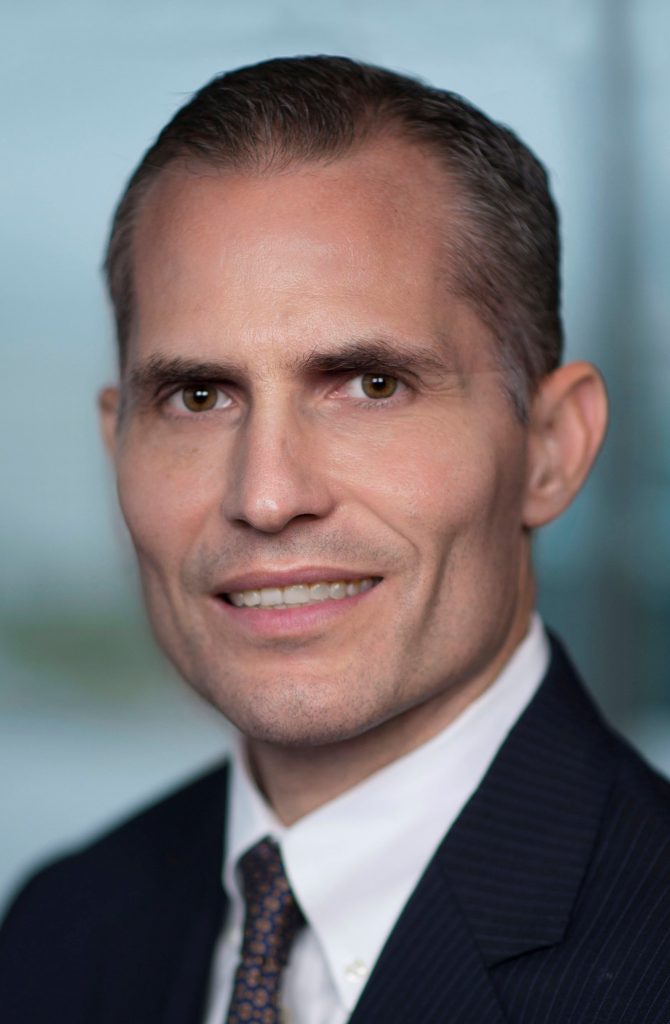Small businesses were hit heavily by the pandemic and the effects of this are still ongoing as the economy begins to recover. Over the years, American Express has supported SMEs by relaunching its successful ‘Shop Small’ campaign in Canada last year, encouraging cardmembers to shop at small businesses. Paul Roman, Vice President and General Manager of Global Commercial Services at American Express Canada, tells Intelligent CXO about the campaign in more detail, its success and similar initiatives.

First founded in 1853 in Canada, American Express has expanded exponentially since then, to have global reach, however, they have never forgotten their roots. The company is committed to helping Canadian small businesses and have released multiple initiatives to aid their growth. For example, in 2020 American Express rolled out its largest ever global ‘Shop Small’ campaign, with the aim to jumpstart spending at SMEs affected by COVID-19. This programme was a heavy success in Canada with cardmembers swiping their cards at more than 64,000 small businesses across the country.
In addition, the company launched ‘Blueprint: Backing BIPOC Businesses’, a campaign designed for BIPOC small business owners in Canada, offering a detailed mentorship programme and CA$1,000,000 in grants to get these businesses up and running.
To further help SMEs, this autumn, the company announced the launch of the newly refreshed Business Gold Rewards Card – something which has not been done since 2014. It was designed for entrepreneurs and small business owners, with the refresh including: more bonus points, financial flexibility/protection, and digital management tools. The Card helps Canadian business owners reinvest in their passion with richer rewards linked to higher everyday business-to-business spending. As part of the Card refresh, Amex unveiled a new campaign aimed at the entrepreneurial #GoldGetters of Canada who embody the quintessential ‘go-getter’ spirit. Designed by Dentsu McGarry Bowen, North Strategic, Notch Video and UM Canada, the new multi-channel campaign reaches audiences through online video, digital, PR, social and influencers.
Paul Roman, Vice President and General Manager of Global Commercial Services at American Express in Canada, spoke to Intelligent CXO about these in more detail and how Amex is continuing its pledge of aiding Canada’s small businesses.
What are the pain points for SME customers and wider businesses?
A lot of the pain points are around things like access to capital, cash flow and how organisations can scale their business. Questions like ‘how do I find new customers?’ and, increasingly, ‘how do I go digital and become more efficient?’. Those are the typical things you hear from small business owners.
During COVID-19 all those problems became much more important, especially liquidity and being able to stay in business, or the need to pivot very quickly in having your revenue shut down, having to change your business model, going online or moving employees to remote locations.
Those are the key things we hear and typically we use them to change our servicing model to inform product developments, ensuring we’re offering things that are going to be useful to customers in the various circumstances and issues that they’re facing.
How do you tailor your approach to each client, regardless of whether they’re an SME or an enterprise?
We tailor the approaches in several ways. Number one: we’ll manage by segment. One thing that we pay special attention to is sub-segmenting: by geography, industry type, the growth trajectory and the financial position of the company. We can then start to put the management of these companies into portfolios, where the people managing them have a specificity of understanding, not only of what our products and services can do but the relevance of what they might mean to a specific company. For example, a trucking company in Manitoba, versus an e-commerce company in Quebec. That second level of detail helps make these conversations that we’re having with our customers that much more relevant.
Then, as you go upstream, with the large and global companies you start seeing a requirement around centrally managing a large business programme in multiple markets. For example, there is a financial services company in Toronto that wants to manage everything with a single person. We can structure that to make sure they have a uniformity of how they manage a programme. As you start to move up into the global realm, that’s something that we can offer, to be able to run your business and run your programme in a seamless manner.
Can you tell us about the revamp of the Business Gold Rewards Card and what prompted this?
It was something that we’ve been wanting to do for a few years and the impetus was looking at what small business owners needed. It was designed with that entrepreneurial spirit and the business owner in mind.
In terms of building from the ground up, flexibility was key. We wanted to offer enhanced rewards but make them flexible. We made sure the Business Gold Rewards Card was offering an ability to have a quarterly recognition of your spending, so you want to earn incremental rewards. We allow people to do that quarterly. Spend 20,000, get an incremental 10,000 points on top of what you’re earning. But, more importantly, it was considering what small business owners were telling us in terms of how we can help them manage their business.
Then, finally, there was a digital component in terms of servicing tools, enabling them to understand and manage the programme, or insurances and fraud protection. A lot of people are managing their business from home now on their mobile phone. More and more people are relying on that as their one piece of equipment.
All in, I’d say the Business Gold Rewards Card is very much an entrepreneur needs-driven product enhancement to help entrepreneurs manage their business and be go-getters.
How have client requirements changed over the last year and how has that shaped your strategy?
We’re starting to see the flex in needs, one is flexibility in and of itself. How are you going to be flexible in how you’re servicing my business? How are you going to be more digital? People, who’ve all pivoted their businesses over the past 18 months are saying ‘you need to make it easier for me to run my business’.
One example would be tapping a card. Let’s raise the limit on what you can tap your card on so that you can have a digital experience as a consumer.
Another way would be our accelerated partnership with Linear Financial Technologies – a digital lending platform. We launched a solution with them because even pre-pandemic, there was a lot of criticism about how cumbersome it was to access a business loan. Linear has a market-leading digital end-to-end experience and we wanted to bring that into our customer base to enhance the servicing model to be more flexible and meet digital needs.
Another thing we did is recognise the value that people pre-pandemic might have put into a business card when you think of rewards and travel in a traditional sense. We wanted to create partnerships with computer peripherals, and we embedded those benefits into the card. So as people were making those purchases or using those services, they could get rebated back from us so in the day-to-day business they were able to manage the pressure they were feeling.
Can you talk us through your shop small campaign and any similar initiatives that encourage business for smaller customers?
Shop Small was already a large initiative for American Express across many international markets. It’s a global programme encouraging Cardmembers to shop with small merchants. It’s recognising small business owners and how we are going to help them, consume and manage their business. We’ve made quite a significant investment in encouraging our Cardmembers to visit all those small business owners who are so critical to the recovery of the economy. In essence, we would reward Cardmembers CA$5 for every time they spend CA$10 at a small merchant and we would GeoMap small businesses so that in your various regions you’d understand who the participating merchants were. Over the past two years, it’s grown exponentially in terms of participation both on the Cardmember side and on the merchant side.
If you think of the recovery, and if you think of inclusion and diversity, not every small business owner, especially in the BIPOC community, is participating equally in terms of either business opportunities or the recovery speed. We launched a programme called Blueprint, where we’ve provided 100 BIPOC entrepreneurial companies with CA$10,000 to finance their business, but also complemented that with a 15-week mentorship training programme in collaboration with DMZ, an incubator for start-ups around the world.
Most recently, we’ve launched a podcast series called ‘Build It Braver’, hosted by Vivian Kay. She has 12 segments with small business owners and we also bring in someone who’s an established successful entrepreneur to help these small business owners grow the company.
Looking ahead, what industry trends will shape your future strategy in the next 18 months?
What we’re seeing is a lot of digital experiences and solutions across a whole procure of pay-to-receivables channels, whether it’s enhancing risk data, automating payments, automating receivables, making more data available to customers, we’re seeing solution sets coming out. These solutions are built around growing your customer base as quickly as possible in terms of trying to get scale and relevance.
With all these disruptive technologies coming online, it is important to bring that together into an ecosystem and make them relevant and easy to use for customers. What we’re trying to do at Amex, whether it’s product development, or whether it’s looking at partnerships, is bring this together so you can get the benefits of digitisation but also make it work from day-to-day. It’s bringing all these concepts under one roof.
What would be your advice to enterprises and SMEs as they plan their business strategy?
One of the most important things that you can do is use and leverage the resources and partners around you. Many people don’t realise the various tools that they have at their disposal. When there’s something as simple as a card, are they maximising the unsecured loan that we happen to be giving? Are you maximising the ability to leverage a new capability or a new service? The people and the successful companies are integrated with their partners and the solutions that we or anyone else has to offer them.
Click below to share this article

